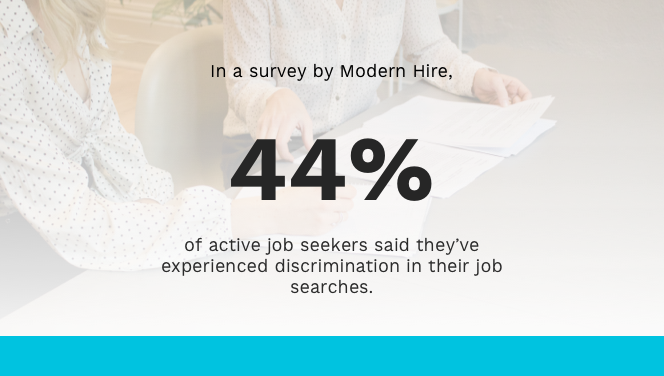Getting the right people on board is critical for companies of every size in every industry. If your recruiting process isn’t effective in terms of quality, time, and cost, you’ll suffer the consequences of poor hiring for years to come.
Organizations are finding more and more that relevant data can help improve the way they hire and match the right candidates to open roles based on their skills and the requirement of the position. However, this matching technology in recruitment isn’t widely understood––which can cause confusion and difficulty when digitally transforming recruitment at your company.
To help make your recruitment processes more efficient, here is everything you need to know about matching technology!
What’s in?
- What is matching technology in recruitment?
- Why should you use matching technology?
- How does the matching process work?
- How do you set benchmarks for the results?
- How does matching technology help you tackle bias in recruitment?
- What types of roles are matching technology most useful for?
Like what you see?
Don’t miss out. Subscribe to our quarterly digest to get the latest TA and TM resources delivered right to your inbox.
What is matching technology in recruitment?
Think about what happens any time you post a listing for an open position. You’re immediately flooded with applicants who believe they’re qualified for the job––and it’s your responsibility to weed through them all to see who actually fits what you’re looking for.
It’s not always an easy process.
Matching technology in recruitment steps in to help.
What exactly does that mean?
A battery of assessments is used to evaluate candidates across multiple competencies that are relevant to and predictive of success on the job. The results from these assessments are combined into one score to help recruiters make efficient and objective decisions about candidates.
You can effectively identify which candidates to move forward in the recruitment process and which candidates are likely not going to be successful on the job and therefore should not be interviewed.
Basically, matching technology does the hard work for you so all you need to do is evaluate the candidate’s score to see how well they fit your open role.

Matching candidates to the right jobs based on their skills and competencies improves the overall productivity at your organization.
Why should you use matching technology?
In addition to just being easier, matching technology can bring a number of benefits to your recruitment and hiring process, including:
- Faster candidate screening. Because you don’t need to manually evaluate each candidate, you can weed through hundreds of applicants quickly and easily––setting your initial stages of the recruitment process off on the right foot.
- Thorough analysis. It thoroughly evaluates each new hire based on job-related criteria so you can make your process more predictive of what success on the job looks like.
- Ensuring high performance. When you’re hiring the right people for the job, you’re better ensuring that each hire is capable of performing as best as possible in their role.
- Consistent hiring decisions. When combined with the standardized interview process, matching technology enables you to make consistently stronger hiring decisions across your entire organization and reduce bias in your recruitment process.
How does the matching process work?
So, you’re probably thinking how great and useful matching technology sounds––but how does it actually work?
The process begins by conducting a job analysis.
It is recommended to look at high performing employees in the roles for which you are hiring. Beyond these workers, it is also useful to consult with supervisors and managers as well as higher leadership levels.
Through interviewing and job shadowing, you collect the job functions and tasks required of the role in consideration, along with the knowledge, skills, abilities, and other characteristics required to perform these tasks. It is important to have a mixture of incumbents, supervisors, and leadership when conducting a job analysis, as each level can provide additional color to the needs of the role, while one level alone might leave gaps in understanding.
Make sure that your job analysis is representative of various groups of people and thinking. Without assuring this, your job analysis just kick-starts a biased candidate selection process.
During interviews, questions such as, “What tasks are frequently performed in this role?”, “What (critical) tasks are performed only by this role?”, “What skills or abilities are needed on day one of this job to be successful?” can be helpful to gather the important information.
After you know what you’re looking for in new hires, you can identify the specific assessments to help identify those skills. These assessments will be used to evaluate your candidates.
However, you also need to consider what “success” on the job looks like, which will, of course, differ per role. Wherever possible, use objective performance metrics. For example, if you’re hiring for contact center employees, you could use customer satisfaction or handle time to define success on the job and then analyze what skills allow high performers to stand out and what the level of these skills is needed to maximize the likelihood of future success in the role. This is called a benchmark.
In the matching process, candidates go through the assessments for skills you’ve determined are important through the job analysis, and their results are compared to the benchmarks you’ve set. It will generate a score telling you how closely that candidate fits your needs, so you know which applicants you should focus on the most.

Candidates often misrepresent themselves on their resumes or in job applications. Matching technology helps you verify whether or not they really have the skills they claim they do.
How do you set benchmarks for the results?
While you might get a “perfect” candidate every once in a while, chances are one candidate isn’t going to get a perfect score in everything you’re looking for. So, how do you know which candidates you should move forward with?
Based on the job analysis you have conducted, you can have current employees take the assessments deemed important for assessing the important knowledge, skills, and abilities. Using performance data, the assessments can be analyzed to determine which assessments have significantly different scores for high performing employees compared to lower performing employees.
However, keep in mind that these employees were already vetted in the hiring process which makes it difficult to differentiate performance. For example, if using a situational judgement test, it is likely that a current sample of employee will score very well since they were already selected for having the desired behavioral tendencies. Therefore, it’s important to use this analysis (which is called a concurrent criterion validation) in combination with the job analysis to determine which assessments to use in the hiring process.
To get proactive about the next time you’re going to hire, you can implement an assessment into your hiring process and let candidates go through it while not using the scores to make hiring decisions at first. Then, by comparing new hires’ performance after 30-days on the job, you can see which hires fit best within the roles they were hired for and set your benchmarks better.
This is a predictive analysis as opposed to the previously mentioned concurrent analysis which involves analyzing your current employees.
Stop guessing,
Start data-driven hiring.
Learn how you implement a modern candidate selection process, that is: streamlined, experience-driven and backed by data.

How does matching technology help you tackle bias in recruitment?
Because matching technology uses assessments and skills to determine who is best for each open position (rather than a resume or how well you “clicked” during an interview), you’re evaluating all your candidates based on job-related criteria defined through a thorough job analysis.
Matching technology is also documented and data-driven, helping you remove any bias from the hiring process. You can revisit the results and check if there’s been any adverse impact, allowing you to then make adjustments to further remove bias from future recruitment and hiring processes.
This allows for more diversity and inclusion in your recruitment process and workforce––and not just for “protected groups.” You can better include candidates with different backgrounds, experiences, and skills.
For example, let’s say you have two candidates, one from a top-rated university and one from a smaller public school. You might automatically assume that the more elite education means a stronger candidate, but that won’t always be the case. If the candidate from the smaller public school scores better for the skills you’re looking to hire for, you’re making sure you’re hiring based on competencies––not where they went to school.

Discrimination in the hiring process is still common. Using matching technology built on science reduces the risk of bias creeping into the process.
What types of roles is matching technology most useful for?
Matching technology relies on data to be effective, which means it can be tricky for roles you haven’t had in your organization in the past or positions you otherwise don’t have a lot of data for. While you can always look to external resources to find what kind of skills are important, it often involves some guess-work.
Matching technology is most effective for high-volume hiring, such as roles you have many candidates for or when you need to hire many people for similar roles. The larger your hiring base, the more you can rely on data to make predictions. This is also true because high-volume hiring often involves hundreds and hundreds of applications to weed through, so matching technology can help cut down on the time-consuming busywork.
However, this doesn’t mean matching technology can’t be used for non-high volume roles. Matching technology in low-volume roles can still support you in more accurate decision making. You just need to set more general benchmarks.
Look at your company or a specific department as a whole and get more general about skills and performance levels. Identify who exceeds expectations, meets expectations, or who is an inconsistent performer and do your analysis. Research suggests that in general, high conscientiousness and integrity and high cognitive ability leads to higher performance.
While these skills and characteristics might not be targeted for your individual role, it can give you the confidence that you’re hiring better candidates for your company as a whole.

Matching technology helps you fight unwanted turnover by making consistent hiring decisions.
Over to you
Whether you’re hiring a hundred people or just one, you want to be sure you’re bringing the best candidates available on board. When you’re trying to find the right candidate for your open position, using technology can keep your processes efficient in time and cost, and ensure fair hiring practices.
Matching technology allows you to make data-driven, consistent, objective, and fair hiring decisions every time––and without compromising on the quality of your new employees.
Although matching technology might not be right for every single hiring situation, the skills and assessment-based approach can make your recruitment processes overall more efficient.
Stop guessing,
Start data-driven hiring.
Learn how you implement a modern candidate selection process, that is: streamlined, experience-driven and backed by data.



